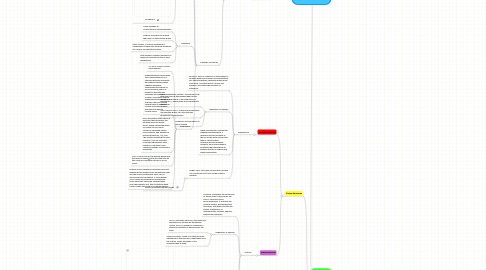
1. Most Common Diseases/Disorders of the Adrenal Glands
1.1. Addison's Disease: Failure of the adrenal glands to produce adequate amounts of the hormones Aldosterone and Cortisol.
1.1.1. Causes
1.1.1.1. Tuberculosis
1.1.1.2. Cancer of the Adrenal Glands
1.1.1.3. Autoimmune Disease
1.1.2. Symptoms
1.1.2.1. Muscle Weakness
1.1.2.2. Fatigue
1.1.2.3. Weight Loss
1.1.2.4. Low Blood Pressure
1.1.2.5. Low Blood Sugar (Hypoglycemia)
1.1.2.6. Loss of Appitite
1.1.3. Treatment
1.1.3.1. Taking oral Corticosteroid Supplements
1.1.4. Diagnostics
1.1.4.1. ACTH Stimulation Test: Determines if the body can produce cortisol when prompted to by ACTH. A small dose of ACTH is injected into a patients bloodstream, and hours later blood cortisol levels are measured to detect a rise in cortisol levels.
1.1.4.2. CRH Stimulation Test: CRH is a hormone that stimulates the pituitary gland to release ACTH, which causes the levels of cortisol to rise. Blood cortisol is measured before CRH injection, and samples of blood are taken 60, 120, and 180 minutes following the CRH injection. if ACTH levels rise after injection with no subsequent rise of Cortisol, the patient likely has Addison's disease.
1.1.4.3. MRI
1.1.4.3.1. MRI IMAGE
1.2. Cushing's Syndrome
1.2.1. Causes
1.2.1.1. Taking oral Corticosteroids (Ex. Prednisone) to treat lupus or Rheumatoid Arthritis.
1.2.1.2. Tumor on pituitary gland causes it to release too much ACTH, driving more production of Cortisol by the Adrenal Glands.
1.2.2. Symptoms
1.2.2.1. Fat Deposits around Abdomen/Upper Back.
1.2.2.2. Thinner Skin
1.2.2.3. Cuts Take a long time to heal
1.2.2.4. Erectile Dysfunction
1.2.2.5. Symptoms
1.2.3. Treatment
1.2.3.1. Lower Dosages of Corticosteroid Supplementation
1.2.3.2. Surgical Procedure to remove the tumor on the pituitary gland.
1.2.3.3. After Surgery, a cortisol replacement supplement is taken until the body produces it in normal concentrations again.
1.2.3.4. After surgery, radiation treatment is applied to prevent the tumor from reappearing.
1.2.4. Diagnostics
1.2.4.1. 24-Hour Urinary Cortisol Measurement
1.2.4.2. Dexamethasone Suppression Test: Dexamethasone is a steroid substance that gives the anterior pituitary gland negative feedback, suppressing the release of ACTH hormone, which is known to stimulate the synthesis and release of Cortisol. The patient takes a Dexamethasone supplement and then later has a blood sample taken to measure cortisol levels and analyze how the drug affects cortisol levels.
1.2.4.3. CRH Stimulation Test: CRH is a hormone that stimulates the pituitary gland to release ACTH, which causes the levels of cortisol to rise. Blood cortisol is measured before CRH injection, and samples of blood are taken 60, 120, and 180 minutes following the CRH injection. If ACTH levels are increased significantly after injection, a pituitary tumor causing Cushing's Syndrome is suspected.
1.2.4.4. MRI: A visual scan of the adrenal glands and the head to detect any tumors that can be the cause of increased Cortisol or ACTH levels.
1.2.4.5. Petrosal Sinus Sampling: Procedure involving drawing blood samples from the petrosal sinus and the arm simultaneously after CRH is introduced into the patient. If much higher ACTH levels are measured in the petrosal sinus areas than the blood samples taken from the patient's arm, than a pituitary gland tumor is likely the cause of Cushings disease.
2. Hormones
2.1. Cortex Hormones
2.1.1. Mineralocorticoids
2.1.1.1. Aldosterone
2.1.1.1.1. Function: Acts on Nephrons in the kidneys to increase water and Sodium Ion Reabsorption into the bloodstream, helping maintain body fluid levels. Increases Blood Volume and Pressure. Stimulates the excretion of Potassium.
2.1.1.1.2. Regulation of Release
2.1.1.1.3. Signal Transduction Mechanism: Aldosterone attaches to a mineralocorticoid receptor in the cell of the distal convoluted tubule. The activated Mineralocorticoid receptor moves to the nucleus where it facilitates the transcription of proteins that aid in sodium and water reabsorption.
2.1.1.1.4. Target Cells: The Distal Convoluted Cells and The Collecting Duct Cells of the Kidney's nephron.
2.1.2. Glucocorticoids
2.1.2.1. Cortisol
2.1.2.1.1. Function: Stimulates the conversion of amino acids to glucose by the liver in a process called gluconeogenesis. It restrains the immune system, decreases bone formation, and helps facilitate the bodies' metabolism of carbohydrates, proteins, and fats. Raises blood Pressure
2.1.2.1.2. Regulation of Release
2.1.2.1.3. Signal Transduction Mechanism: Cortisol is a fat-soluble steroid hormone that enters the cytosol of its target cells through the phospholipid bilayer membrane and binds to a Glucocorticoid receptor that controls gene transcription.
2.1.2.1.4. Target Cells: Liver Cells, Fat Cells, all cells that have glucocorticoid receptors.
2.2. Medulla Hormones
2.2.1. Catecholamines
2.2.1.1. Epinephrine
2.2.1.1.1. Function: Epinephrine (commonly referred to as adrenaline), contracts the blood vessels, dilates air passageways, dilates the iris, increases blood glucose levels, and increases blood pressure. It stimulates glycogenolysis and is part of a mechanism that inhibits the hormone insulin.
2.2.1.1.2. Regulation of Release: Epinephrine is released in response to cases of extreme stress where the body switches to "fight or flight" survival mode. ACTH is also known to increase epinephrine levels.
2.2.1.1.3. Signal Transduction Mechanism: Epinephrine binds to an andregenic receptor on a cell after being released in a stressful situation. Once coupled with the receptor, the cell initiates a sympathetic response, directing its processes into immediate energy production.
2.2.1.1.4. Target Cells: Nearly All Body Tissues
2.2.1.1.5. Epinephrine
2.2.1.2. Norepinephrine
2.2.1.2.1. Function: Norepinephrine is a hormone that increases the heart rate, helps deliver more oxygen to the brain, and facilitates the conversion of complex energy stores into simpler, more functional chemical energy stores.
2.2.1.2.2. Regulation of Release: Released in response to extreme stress and is also stimulated partly by ACTH.
2.2.1.2.3. Signal Transduction Mechanism: Norepinephrine binds to an andregenic receptor on a cell after being released in a stressful situation. Once coupled with the receptor, the cell initiates a sympathetic response, directing its processes into immediate energy production.
2.2.1.2.4. Target Cells: Nearly All Tissue cells in the body.
2.2.1.2.5. Norepinephrine
